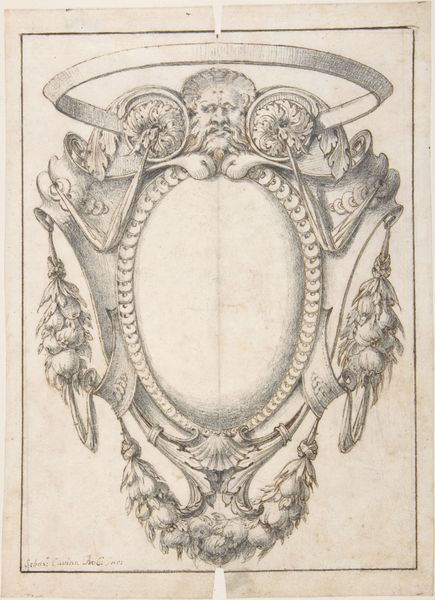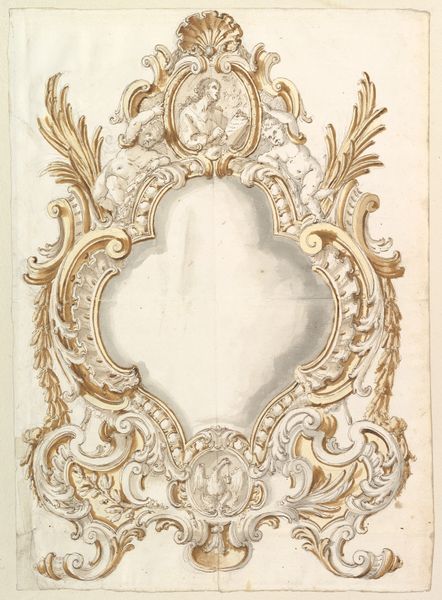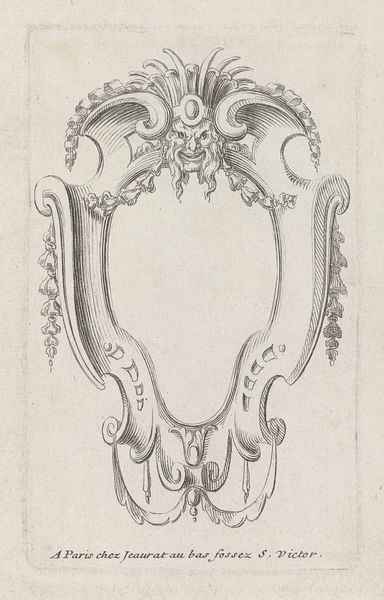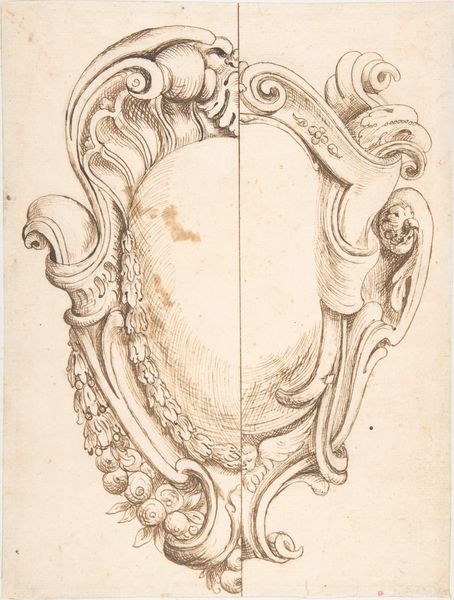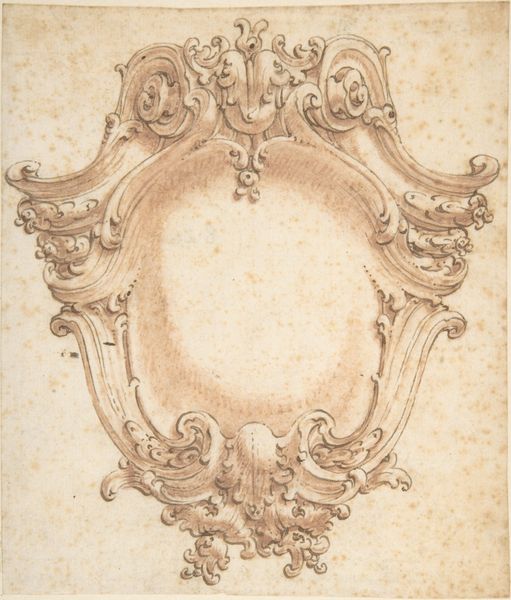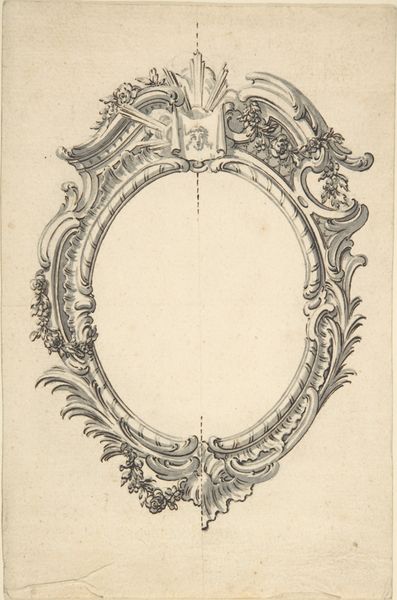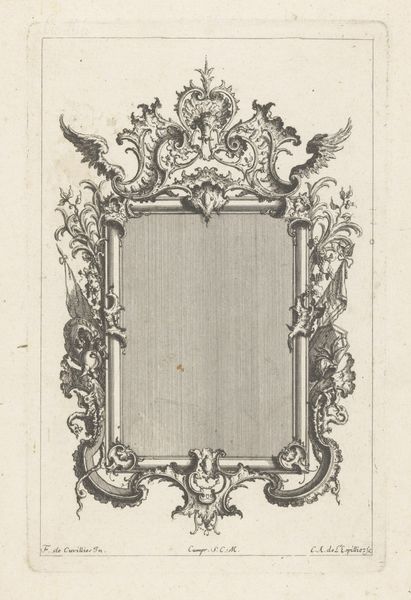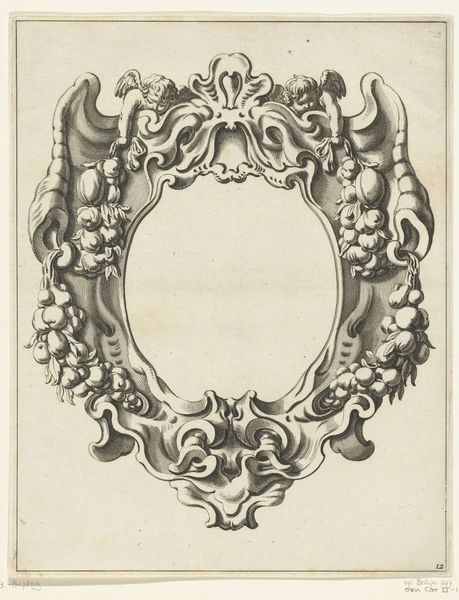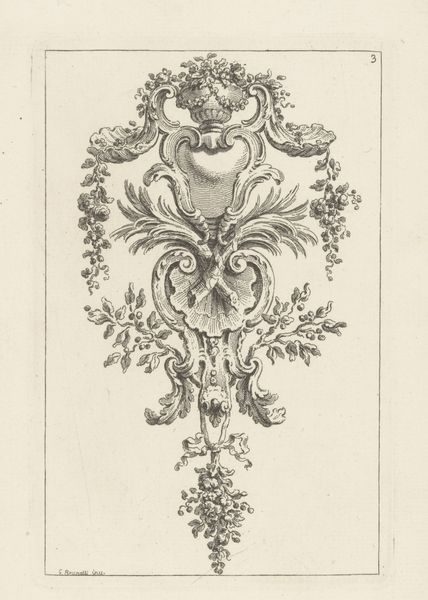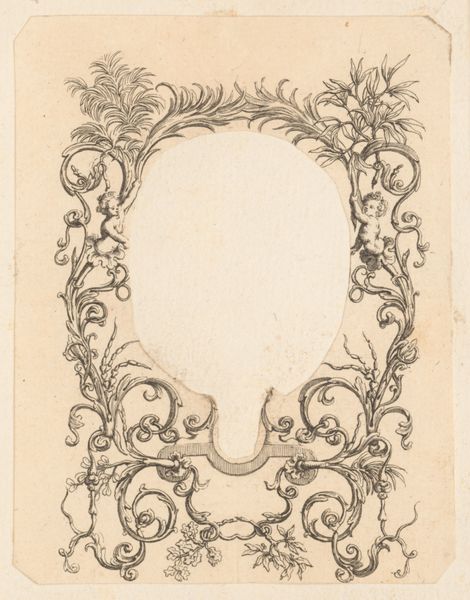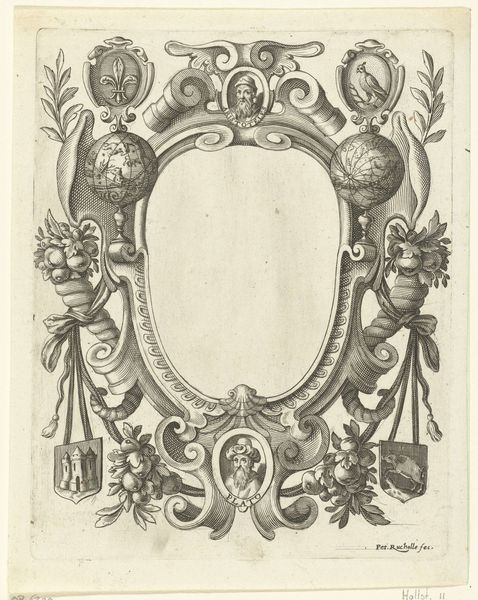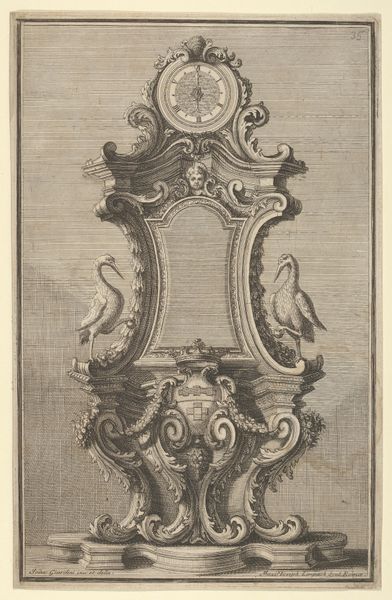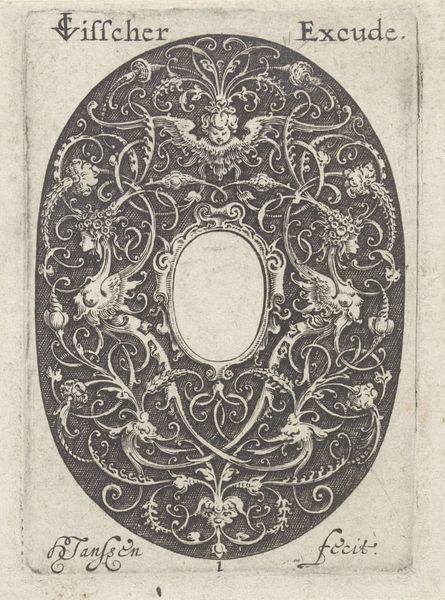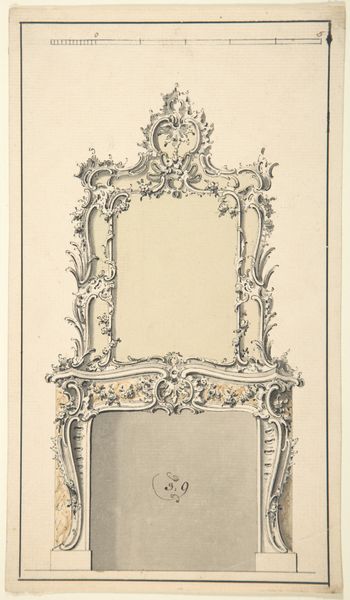
Design for a Cartouche with Zoomorphic Mask above and Cornucopia of Fruit and Leaves on the Sides. 1790 - 1800
0:00
0:00
drawing, print, pencil, charcoal
#
drawing
#
neoclacissism
# print
#
charcoal drawing
#
form
#
fruit
#
pencil
#
line
#
charcoal
#
academic-art
Dimensions: sheet: 9 1/8 x 6 7/8 in. (23.1 x 17.4 cm)
Copyright: Public Domain
Curator: This work, dating to the late 18th century, is titled “Design for a Cartouche with Zoomorphic Mask above and Cornucopia of Fruit and Leaves on the Sides," created by Sebastiano Cavina. It's currently held at the Metropolitan Museum of Art. It’s a charcoal and pencil drawing—imagine the crisp lines the artist could achieve. Editor: Well, my initial impression is that it feels… empty. An elaborate frame for something that's missing. The grayness really accentuates the hollowness; the oval space yearns for a portrait, a scene, anything, to give it purpose. Curator: Absolutely, and the emptiness is intentional, part of its function as a design proposal, awaiting a patron’s desire and artistic interpretation. It embodies the Neoclassical aesthetic, the perfect symmetry, the idealized forms borrowed from antiquity, all designed to evoke balance, order. We need to see past its intended function as design and meet Cavina on his plane. The space is meant to spark new meaning from us! Editor: While technically proficient, doesn’t it reek a bit of that era’s hierarchical worldview? The cartouche itself, a frame of power and status… like art reduced to simply adorning wealth. I mean, that blank oval… Whose stories were *allowed* inside those frames back then? Were the voices of the working class even considered when rendering an ornamental frame such as this? Curator: That's a potent critique. And it's precisely those social dimensions we have to bring to the work. Though it may be intended for aristocratic display, the draftsmanship itself is impressive, maybe even challenging the elite by mastering their academic tradition! Imagine Cavina, making his own statement by reinterpreting old themes. What possibilities emerge in that light? The fruit is particularly engaging, with this near grotesque rendering of each, as if bursting forth at any given moment. Editor: Agreed, the artistry is undeniable. Perhaps it’s a call to examine who gets to create and be celebrated in art today. If we can’t, at the very least, be in active pursuit of equity for historically disenfranchised people, this Neoclassical period piece just functions as wallpaper for an elite society of oppressors. Curator: I’d like to think that maybe even then, beauty, even ornate, restrictive beauty, offered an echo of dissent. The idea of making old things new again; is there freedom to be had in that, at least? Editor: Maybe. But without actively acknowledging the legacy and systems behind such design, such forms remain tethered to an unequal past. Perhaps what needs to be centered within is not merely aesthetics, but radical questions surrounding our history.
Comments
No comments
Be the first to comment and join the conversation on the ultimate creative platform.
